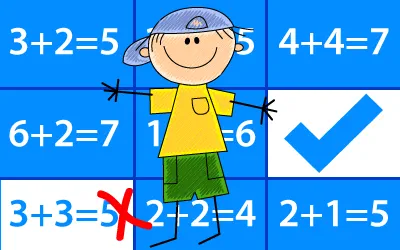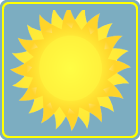


Game: FOUR IN A ROW
Aim: To get four symbols in a row
Method:
Choose a square and click on it. Click on the correct answer to the question in the box that appears. If you are right the square is replaced by a tick. Continue until you have won 4 in a row...

anonymous 🥰
"Which fraction is biggest"
4 IN A ROW game to practice
'Grouped frequency table: modal group, range' for 8th grade
8th grade / Statistics / Continuous data / Continuous grouped data / Grouped frequency table: modal group, range
Grouped frequency tables: modal group, largest range
Continuous data can be represented in a "Grouped frequency table" where each class (group) covers the data points within a certain range, and the classes together cover the entire range of the data.
The benefit of grouped frequency tables becomes clear when there are so many raw data points that discrete values would become difficult to process. A limitation of continuous data is that individual data points are lost so that exact calculations of the mode or range of the original discrete data points becomes impossible. Instead techniques have been developed to approximate these values for continuous data.
Instead of a mode (the most frequent individual value in a data set), we can find the "modal group" which is the class of data that has the highest frequency. So if we have a grouped frequency table with classes 1-20, 21-40 and 41-60 that have frequencies of 12, 7 and 5 respectively, then the modal group is 1-20 because it has the highest frequency of 12.
Instead of an absolute value for the range of a data set, we can find the "largest range". This is the difference between the largest possible value in the biggest class and the smallest value in the smallest class. So if our grouped frequency table has classes 21-40, 41-60 and 61-80, then the largest range is 80 minus 21 which is 59.
In this topic you are asked to find either the modal group or the largest range for a series of grouped frequency tables. There are 8 question/answer pairs in the lessons, and an additional 8 question/answer pairs in all the games and tests.
With our Four in a row math game you will be practicing the topic "Grouped frequency table: modal group, range" from 8th grade / Statistics / Continuous data / Continuous data. The math in this game consists of 16 questions that ask you to identify the modal group or largest range for each grouped frequency table.

The game will reinforce the math you have chosen to learn by getting you to match the question to the correct answer.
Notes
- Do the Math lessons for your topic before playing this game
- Wrong answers are ok, you just have to try again until you get them right
- There is help available for all games by clicking the question mark button
UXO * Duck shoot * The frog flies * Pong * Cat and mouse * The beetle and the bee
Rock fall * Four in a row * Sow grow * Choose or lose * Mix and match





How to play 4 in a row to practice
'Grouped frequency table: modal group, range' for 8th grade

- Select "4 in a row" on the math games selection page.
- Take a quick look at the method text for 4 in a row.
- Click on PLAY to proceed, or change your topic with the CHANGE TOPIC button.
- On the play page you have a grid of 16 pictures (some topic picture are shown multiple times for shorter topics).
- Click on a picture cell.
- The topic question will appear along with a series of possible answers.
- Click the speaker icon to hear any particular answer (Speech enabled browsers only).
- Click the answer that corresponds to the picture question.
- If you are correct, the picture will be replaced by a tick - otherwise, a wrong sound will play.
- Continue matching picture questions to their correct answers until you have completed a line of 4 cells.
- The line can be diagonal as well as horizontal or vertical.
- 4 ticks in a row wins the game.
- Choose an option from the green sign, or click on games to choose a different game.









